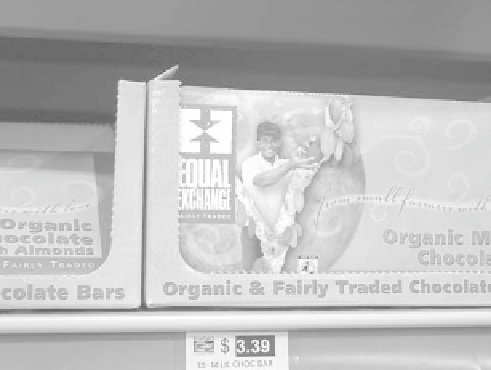Agriculture Reference
In-Depth Information
extend the change agenda to the relationship between the
eater and the land. Just as we must maintain the land's
ability to produce, we must also maintain our relationships
as humans with that land and each other. We all have a
responsibility for the land, the people it supports, and the
culture of our food system (Freyfogle, 2001).
The scale of changes needed in our food system
is daunting. Some change has occurred since Rich
Merrill's
Radical Agriculture
appeared in 1976. Many
of the ecological concepts and approaches to farming
that he proposed in his chapter “Toward a Self-Sustaining
Agriculture” appear in this textbook, and are being
implemented broadly by farmers and researchers alike.
But most of this change has been — following the
distinctions made in Chapter 20 — at the second and
third levels of the transition process, and too restricted
to the farm and the farmer. Meanwhile, the separation
between the eater and the farmer continues to grow,
agriculture becomes more capital intensive, and con-
solidation puts it under the control of fewer people. To
reach the fourth level of the transition process, more
radical change — involving the entire food system —
is required.
FIGURE 23.8
Fair Traded chocolate on a grocery shelf.
The
Fair Trade certification tells consumers that the farmers who
grew the cacao received fair compensation for their labor. Photo
by Eric Engles.
how we eat, and change anything that negatively impacts
sustainability. We can choose foods grown or raised in a
manner that maintains and regenerates the natural resource
base of agriculture, foods processed and marketed in ways
that distribute rather than concentrate profits, and foods
that are as much as possible transported locally. At the
current time, this can best be done by buying outside of
the mainstream food system, as we have discussed above.
Beyond being very intentional with one's daily food
buying, food citizenship can also involve other actions that
send signals for the need for change. One such action is
requesting local or sustainably grown produce at main-
stream markets and restaurants. Sometimes simply asking
questions about where and how items were produced can
have an effect. Other important actions include engaging
in public policy development from the local to the global
level, working to create a culture of sustainability, and
educating others about how the present food system works
to encourage unsustainable practices, consumer alien-
ation, and agrarian decline.
There are many challenges we face in being truly good
food citizens. First, the current food system offers few food
options that meet the criteria of local and sustainable. Sec-
ondly, current federal policy promotes a narrow range of
commodities and this has resulted in an abundance of cheap
food components, rather than health or sustainability of the
land or the people connected to that land. Third, institutional
food buying policies at all levels, from local to federal,
makes the purchase of local or sustainable food products
extremely difficult. Fourth, we still lack a critical analysis
of how health and nutrition systems have been impacted by
current food market consolidation and policy. These barriers
only emphasize the need for change at all levels.
In previous chapters, we have been calling for a new
relationship between the farmer and the land; here we
FOOD FOR THOUGHT
1.
When you go to your local supermarket, how
much information is available on who grew the
food, how it was grown, and how far away it
came from?
2.
What are the cultural differences in food pref-
erences around the world, and how are these
being changed by advertising and the Internet?
3.
Food quality is a complex subject. What are
some of the components of food quality that
extend beyond nutritional aspects and incorpo-
rate more of the components of food system
sustainability?
4.
What part of the food that you eat every day
could you grow yourself?
5.
How many farmers' markets are there in your
community?
6.
How many farmers do you know?
7.
If you were to change your diet in order to
reflect the “culture of sustainability,” what
would you add or remove from what you eat
now?
INTERNET RESOURCES
Agricultural Marketing Service, Farmers Market
Site
www.ams.usda.gov/farmersmarkets
A valuable source of information about the

Search WWH ::

Custom Search